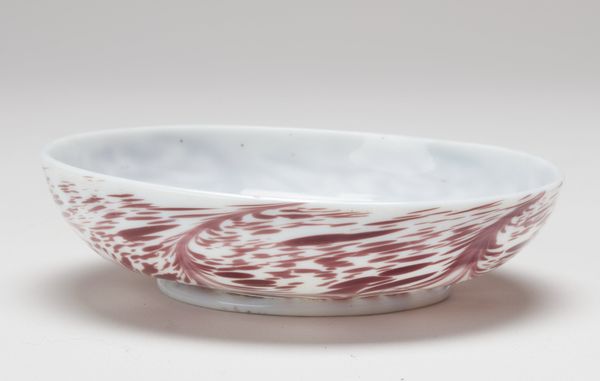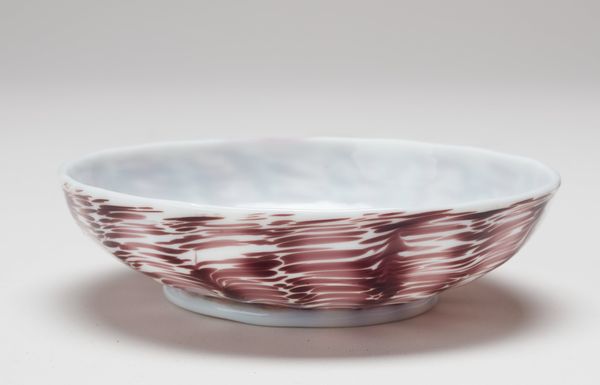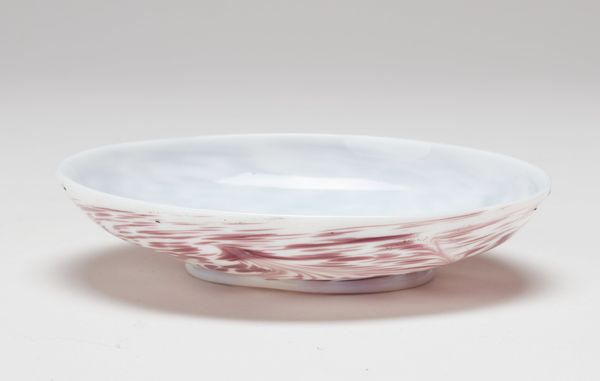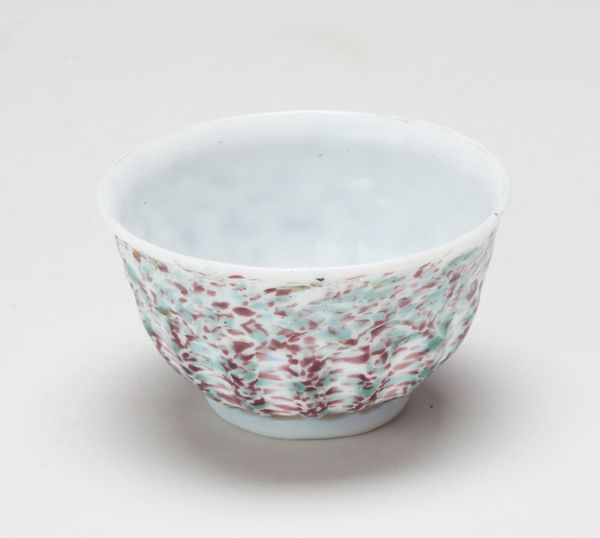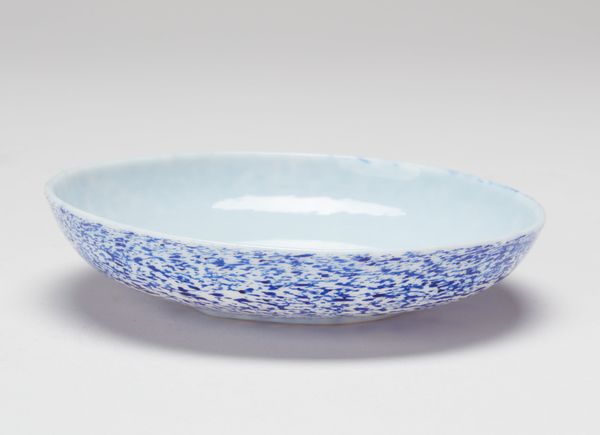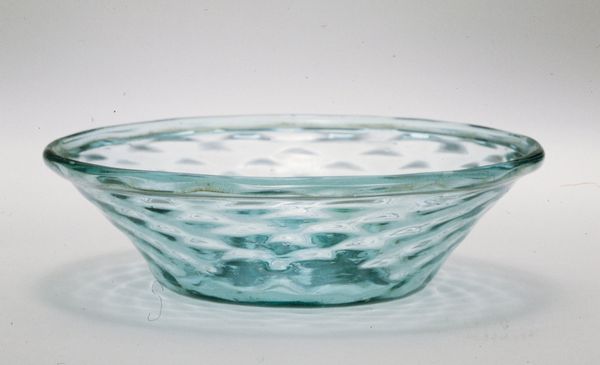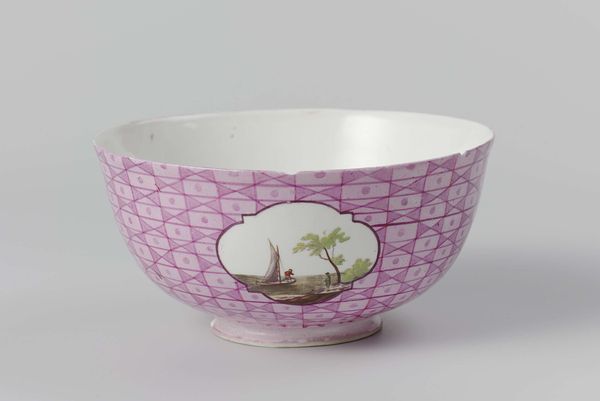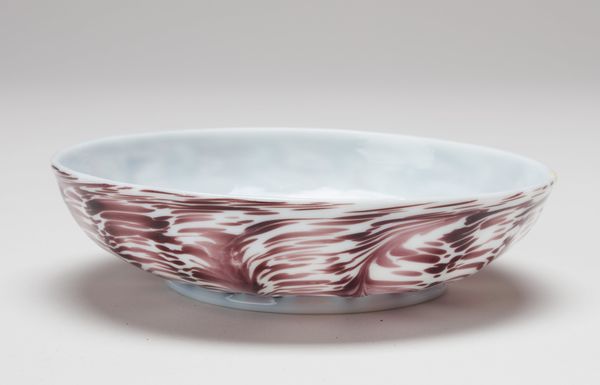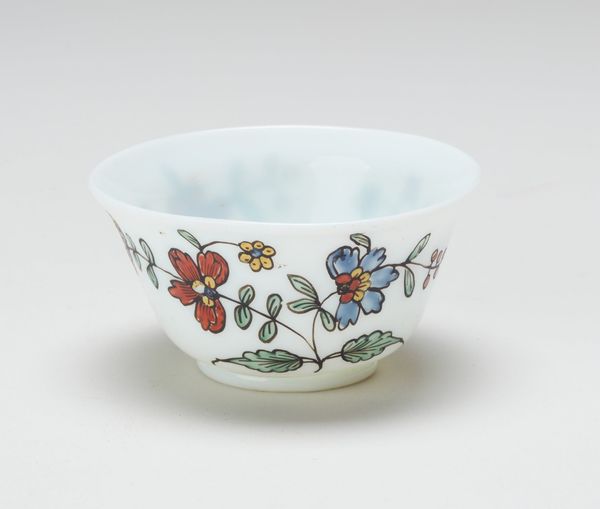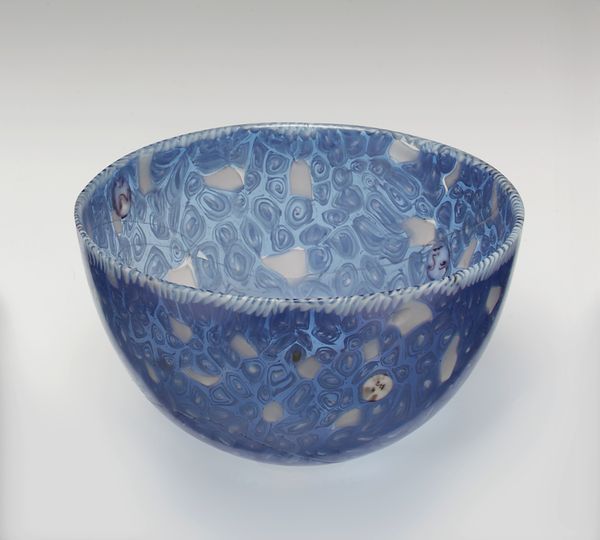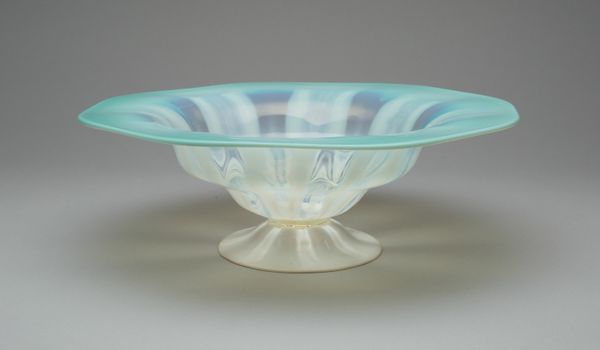
ceramic, glass
#
ceramic
#
glass
#
ceramic
Dimensions: 1 1/4 x 5 1/8 x 5 1/8 in. (3.2 x 13.02 x 13.02 cm)
Copyright: Public Domain
Curator: Here we have an example of 18th-century glasswork: an anonymous saucer, currently held here at the Minneapolis Institute of Art. Editor: It's deceptively simple at first glance, but there's something incredibly charming about it. The muted colors—hints of faded rose and seafoam green—give it a tranquil, almost ethereal quality. Curator: Indeed. Note how the speckled pattern isn't merely decorative. Each individual spot contributes to the overall texture, playing with light and shadow across the form. There is an implicit tension between chaos and order within the composition. Editor: The specks themselves remind me of confetti, tiny remnants of a celebration or moment frozen in time. It carries an air of delicacy, prompting us to consider what it held, and whose hands it passed through. Perhaps it served as a precious offering? Curator: The materiality, in this case, seems key to understanding the object's purpose. Considering its composition, the opaque glass against the translucent glass seems calculated and renders the entire form nearly weightless. We see the formal interplay of positive and negative space. The rounded bowl rises on a narrow foot creating visual buoyancy, don't you think? Editor: It does give an effect of lightness, although that effect is subtly counterpointed by the density of meaning. Looking at the color palette again, the rose and seafoam might allude to a symbolic connection to Venus or Aphrodite. Given its formal simplicity, could this saucer have been linked to ancient ritual or beliefs surrounding fertility, perhaps serving a role in sacred rites? Curator: An intriguing thought, certainly worth further consideration. We need to remember that many craftspeople worked within very particular stylistic systems that determined how designs could be rendered. These artisans rarely possessed our modern concept of free stylistic expression. Editor: That’s a fair point, so we must temper speculation. Regardless, seeing this artifact in the collection feels rather special—there is an echo of past artistry contained within it. Curator: Precisely. This examination of form and function certainly opens up broader discussions about art, craft, and cultural memory.
Comments
No comments
Be the first to comment and join the conversation on the ultimate creative platform.
